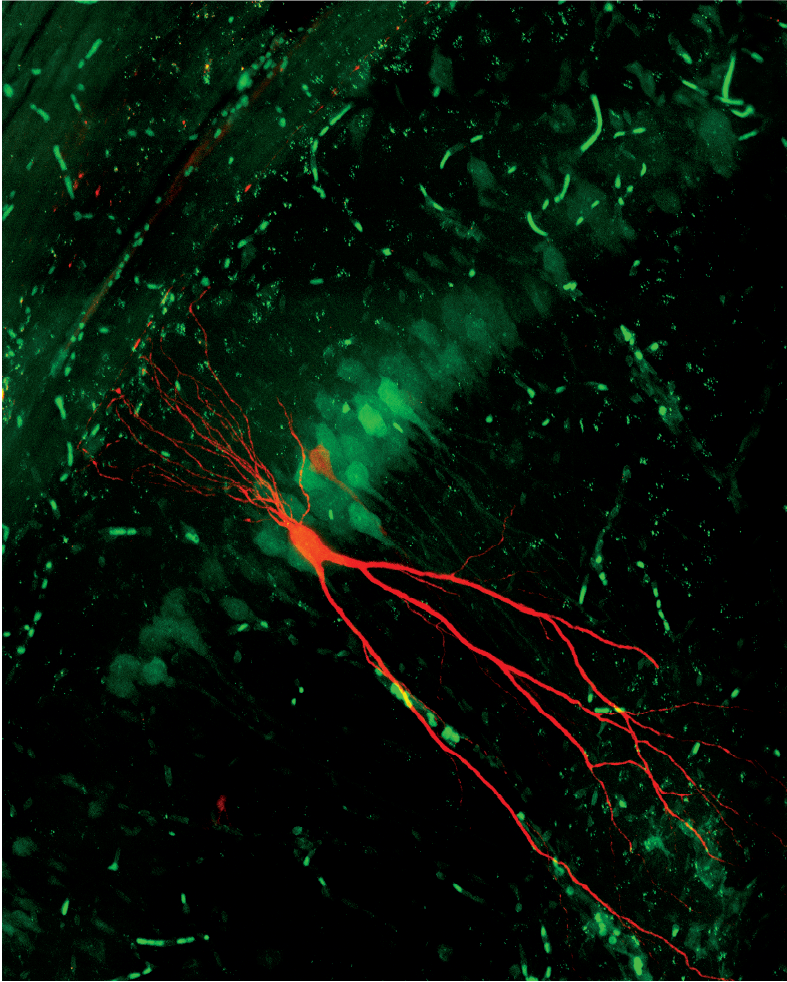The discovery of a signaling pathway in the brain that could make mice into ‘superlearners’ understandably touched off a lot of excitement a few years back.
But new work led by Duke neurologist and neuroscientist Nicole Calakos MD PhD suggests there’s more to the story of the superlearner chemical pathway than anybody realized.

In a study led by postdoctoral researchers Ashley Helseth and Ricardo Hernandez-Martinez, the Calakos lab developed a new tool to visualize activity of this Integrated Stress Response (ISR) signaling pathway because it contributes to synaptic plasticity – the brain’s ability to rewire circuits – as well as to learning and memory.
What they didn’t expect to see is that a population of cells called cholinergic interneurons, which comprise only 1 or 2 percent of the whole basal ganglia structure, seem to have the ISR pathway working all the time. The basal ganglia, which is the focus of much of Calakos’ work, plays a role in Parkinson’s and Huntington’s diseases, Tourette’s syndrome, obsessive compulsive disorder and more.

“This totally changes how you think about the pathway,” Calakos said. “Everybody thought this pathway used an on-demand response type of mechanism, but what if some cells needed it for their everyday activities?”
To answer this, they blocked the ISR in just those rare interneurons in mice and it actually reproduced the enhanced performance on learned tasks that the earlier studies had shown when the pathway was blocked universally throughout the brain. This finding focuses attention on this select subset of brain cells, the cholinergic interneurons that release the chemical signal acetylcholine, as being responsible for at least some of the ‘superlearner’ behavior.
Since the integrated stress response pathway and its potential to enhance learning and memory was identified, drugs for dementia and traumatic brain injury are being designed to manipulate it and help the brain recover. But there may be more to the story than anyone realized, Calakos said.
“Our results show that the ISR plays a major role in acetylcholine-releasing cells, and our current best dementia drugs boost acetylcholine,” she said.

Acetylcholine, the chemical that these rare cholinergic interneurons use to signal in the brain, is well known for its powerful effects on influencing brain states for attention and learning. This finding suggests that at least some of the ‘superlearner’ properties of inhibiting the ISR occur by influencing brain state, rather than acting directly in the cells that are being rewired during learning.
In addition to the full research article, Science published on April 23 an article summary by Helseth and Calakos and a perspective piece by a pair of University of Minnesota neuroscientists highlighting the finding’s importance.
More work is required to sort out what ISR is and is not doing, but it’s possible that these new findings can help to develop “more precise, more nuanced Alzheimer’s drugs,” Calakos said.
If our reporting has informed or inspired you, please consider making a donation. Every contribution, no matter the size, empowers us to continue delivering accurate, engaging, and trustworthy science and medical news. Independent journalism requires time, effort, and resources—your support ensures we can keep uncovering the stories that matter most to you.
Join us in making knowledge accessible and impactful. Thank you for standing with us!
